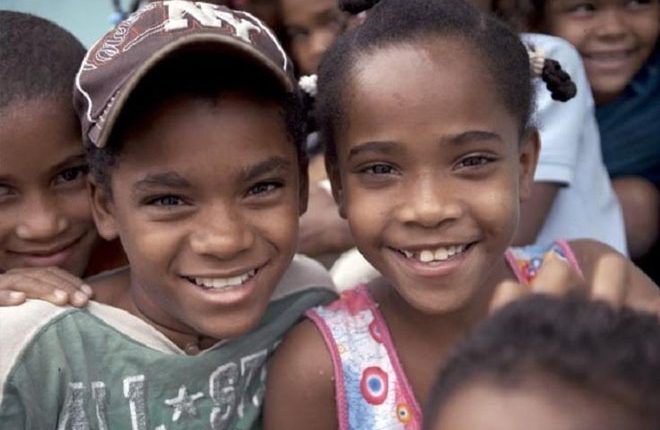Salinas, Dominican Republic — Back in the 1970s, Cornell University endocrinologist Dr Julianne Imperato travelled to the Dominican Republic after hearing strange stories about girls turning into boys.
As if to prove that fact can be stranger than fiction, Dr Imperato discovered that babies born apparently female in the isolated village of Salinas in the island’s south-west, did indeed turn into boys at puberty due to a rare genetic disorder.
To this day, around two per cent – or one in 90 – babies from Salinas are thought to be born with the condition, which occurs due to a missing enzyme during pregnancy.
The transition is so common, moreover, that it is not considered abnormal and the children are referred to as “Guevedoces,” or “penis at 12 years.”
Johnny, now 24, was one of the babies affected and was originally named Felecitia by his parents and brought up as a girl. He spoke to Dr Michael Mosley for the new BBC2 series “Countdown to Life – the extraordinary making of you.”
“I remember I used to wear a little red dress,” he said. “I was born at home instead of in a hospital. They didn’t know what sex I was.
“I went to school and I used to wear my skirt. I never liked to dress as a girl. When they bought me girls’ toys I never bothered playing with them. All I wanted to do was play with the boys.”
The condition is caused by a missing enzyme that prevents the production of a specific form of the male sex hormone – dihydro-testosterone – in the womb.
All babies in the womb, whether male or female, have internal glands known as gonads and a small bump between their legs called a tubercle.
At around eight weeks, male babies who carry the Y chromosome start to produce dihydro-testosterone in large amounts, which turns the tubercle into a penis. For females, the tubercle becomes a clitoris.
But, according to a report in The Telegraph, some male babies are missing the enzyme 5-α-reductase which triggers the hormone surge, so they appear to be born female with no testes and what appears to be a vagina. It is not until puberty, when another huge surge of testosterone is produced, that the male reproductive organs emerge.
What should have happened in the womb happens around 12 years later. They finally grow a penis and their voices deepen.
The transformation happened at the age of seven for Johnny, who claimed that he had never felt like a girl and was far happier after he fully became a boy.
A nine-year-old girl named Carla is currently undergoing the same transformation. Despite being brought up as a girl, his mother noticed that from the age of five he was more inclined towards the rough and tumble play of little boys. He has recently had his hair cut shirt after wearing plaits for years.
Some Guevedoces decide not to change their childhood names, so some men in Salinas have names like Catherine.
Dr Mosley said: “Guevedoces are also sometimes called “machihembras” meaning “first a woman, then a man.” When they’re born they look like girls with no testes and what appears to be a vagina. It is only when they near puberty that the penis grows and testicles descend.
“When Dr Imperato investigated the Guavadoces she discovered the reason they don’t have male genitalia at birth is because they are deficient in the 5-α-reductase enzyme, which normally converts testosterone into dihydro-testosterone.
“By a quirk of chance Dr Imperato’s research was picked up by the American pharmaceutical giant, Merck. They used her discovery to create a drug called finasteride, which blocks the action of 5-α-reductase.
“It is now widely used to treat benign enlargement of the prostate and male pattern baldness. For which, I’m sure, many men are truly grateful.”
Although the guevedoces resemble sexually normal males, subtle differences still exist in adulthood. Most have decreased amounts of facial hair and smaller prostate glands relative to the average male.
Some experts have suggested that the condition has persisted through generations because of the isolation of the villagers.
Because the disorder is so widespread and accepted, the Dominican Republic now believes that there are three sexual categories, male, female, and pseudohermaphrodite.
Similar cases have since been seen in the Sambian villages of Papua New Guinea, although the Sambians view the children as flawed males and they are often shunned.
In the Dominican Republic, the transformation is welcomed with widespread celebration.

